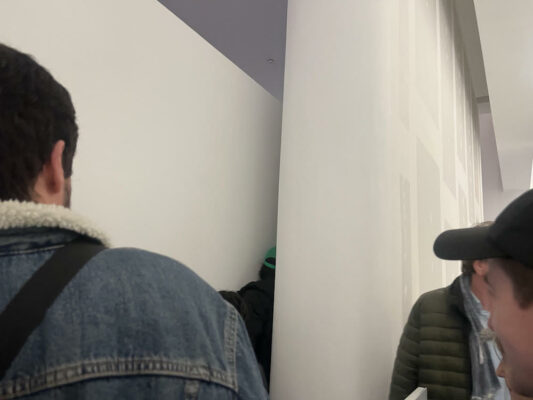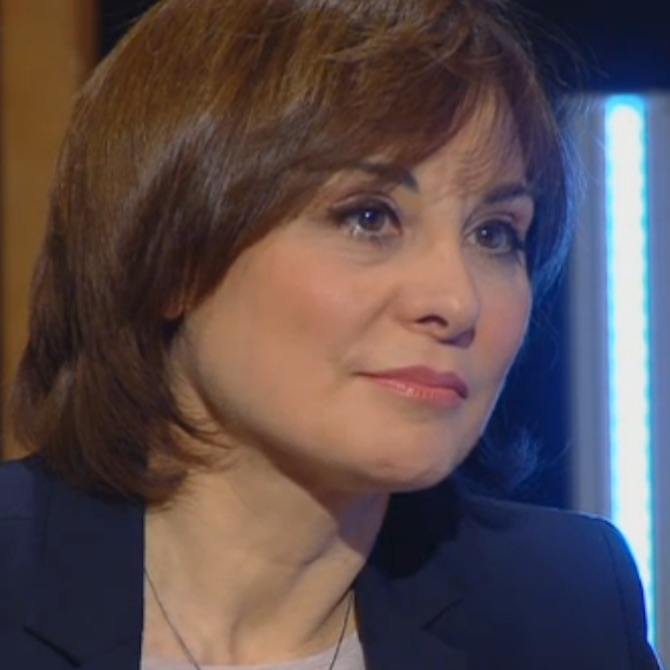Search
To search for an exact match, type the word or phrase you want in quotation marks.
A*DESK has been offering since 2002 contents about criticism and contemporary art. A*DESK has become consolidated thanks to all those who have believed in the project, all those who have followed us, debating, participating and collaborating. Many people have collaborated with A*DESK, and continue to do so. Their efforts, knowledge and belief in the project are what make it grow internationally. At A*DESK we have also generated work for over one hundred professionals in culture, from small collaborations with reviews and classes, to more prolonged and intense collaborations.
At A*DESK we believe in the need for free and universal access to culture and knowledge. We want to carry on being independent, remaining open to more ideas and opinions. If you believe in A*DESK, we need your backing to be able to continue. You can now participate in the project by supporting it. You can choose how much you want to contribute to the project.
You can decide how much you want to bring to the project.

The art ecosystem has a fragile balance that simultaneously serves as a survival strategy. This balance largely relies on solidarity. This brings Mark Fisher to mind, who argued that in the face of neoliberal collapse, new forms of solidarity would be necessary. However, solidarity wouldn’t emerge automatically; it would require the invention of new types of institutions.
Reflecting on institutions is a long-standing discourse that has evolved through various phases and moments. The first phase saw conceptual artists who viewed their work as a critique of institutions. Hans Haacke, for example, used surveys and investigations to expose power dynamics in decision-making, while Robert Smithson compared museums to psychiatric centers and prisons, both with neutral rooms that isolate. Later, Jenny Holzer and Barbara Kruger stepped outside institutions, intervening in public spaces.
The second phase, in the 1980s and 1990s, incorporated subjective and often ironic elements from feminist and post-colonial theories. Institutional critique was now internalized, and the focus shifted to the relationship with institutions. Andrea Fraser argued that we cannot exist outside institutions because they exist within us. Renée Green examined the ties between museum representation, economic power, and colonial roots. Artists like Rirkrit Tiravanija, who was a part of the relational aesthetics movement, proposed alternative uses for museums, turning them into spaces for living—eating, drinking, and coexisting.
Over time, institutional critique became internalized through education, art history canonization and daily practices. Institutions stopped being viewed as the problem and are now often seen as the solution. In Art & Contemporary Critical Practice: Reinventing Institutional Critique, Julia Bryan-Wilson suggested a critique of institutional critique itself—a form of institutionalized critique that questions the role of education, historicization, and their transformation into mechanisms of control and governance.
To date, institutions have incorporated the language and forms of critique (e.g., discussing bodies, care, and listening), but their structures remain unchanged. They retain temporalities, administrative norms and governances that conflict with their rhetoric. For instance, artist Núria Güell pointed out in an article for Atlántica titled “Art and Emancipation in Three Acts” the declared institutional goal of the MNCARS (Museo Nacional Centro de Arte Reina Sofía): “To promote sustainability in alignment with Agenda 2030, contributing to the construction of joyful and eco-responsible societies, while fostering the good life.” However, these noble intentions often clash with daily bureaucracy—a fact that surprises no one.
Yet, we must continue analyzing why changing structures are so difficult and what kind of institutions our societies need. The question is no longer about being inside or outside the institution but about identifying practices that can subtly alter certain inertias. Today, the issue isn’t just about appropriation and neutralization of critique but about a “return to order” in the form of a corporatist shift. This shift, as Hito Steyerl suggests, dismantles and underfunds critical institutions, treating them—as Nina Möntmann describes—like rebellious teenagers.
For the survival of the art ecosystem, it’s crucial to keep exploring this topic. Recently, I had the opportunity to moderate a podcast produced by E/ART (a center for mediation, education, and contemporary art). Together with Daniel Gasol, Isaac Sanjuan, and Patricia Sorroche, we reflected on the need for constituent practices that go beyond opposition and instead create new (and multiple) institutions, from different scales and focus, complementing each other and aimed at emancipatory transformations. We discussed transversal projects and proposals from the fields of mediation and education, which, precisely because they are not in the spotlight, can afford time for listening, experimentation, and failure.
Similar to the constituent practices are also the critical reviews of past experiences and questions about the present, some of them recurrent. This is the case of the [contra]panorama program at MACBA, a proposal that is difficult to synthesize and communicate in a few lines because it is a collective research process from members of different departments of the museum, beyond the curatorial ones, that unfold in the interstices. [contra]panorama is the heir (fortunately only nominally) of the panorama program (initiated in 2021 by MACBA) and now rethought as a speculative temporary space based on concerns that affect both the institution and the artistic ecosystem of the moment, such as working conditions or outsourcing, among others. To this end, it has counted on the participation of artists and members of the mediation departments (education, Radio Web MACBA -highlighting here the excellence of a project that has endured and survived all the stages of the museum-) who have carried out relational research processes accompanied by visual presentations in the spaces of the museum’s first floor. Among others, they have analyzed the first (and only) Barcelona Triennial (2001) -very relevant the fact that this review took place practically in parallel to the preparation and celebration of Manifesta 15 in Barcelona-, the outsourcing processes of the institutions for certain fundamental tasks (such as cleaning) or the computational presentations of bodily presences. In this way, the mechanisms of the institution are made visible and questions are raised that affect the entire artistic ecosystem.
But perhaps the time has come to move on to the next question: If decades of institutional critique and analysis have served to name names and detect options, is it possible to move on to a new phase and affect structures? Can institutional critique or constituent practices generate new realities?
[Featured image: visitors at MACBA pass through the -unexpected- gap left by Luz Broto’s piece, Una pared (2021/2022-2025) once its gradual construction was finished and ended up closing the main access to MACBA’s halls].

Montse Badia has never liked standing still, so she has always thought about travelling, entering into relation with other contexts, distancing herself, to be able to think more clearly about the world. The critique of art and curating have been a way of putting into practice her conviction about the need for critical thought, for idiosyncrasies and individual stances. How, if not, can we question the standardisation to which we are being subjected?
www.montsebadia.net
"A desk is a dangerous place from which to watch the world" (John Le Carré)